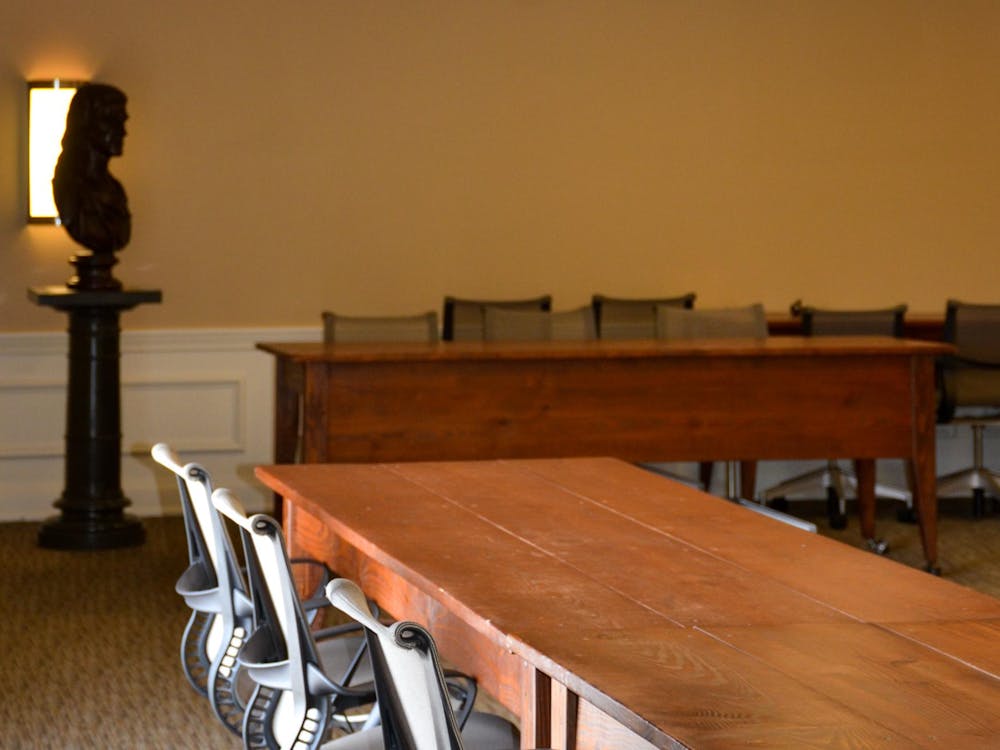The University of Arizona's Large Binocular Telescope Observatory, often referred to as the Mt. Graham project, was dedicated Friday, as the project's partners -- including the University -- prepare for observation to begin sometime in 2005.
Although the telescope is not yet fully operational, one of its two primary mirrors has been installed and produced several test images in September.
Once the telescope is up and running, the Astronomy Department will have access to the telescope for seven nights a year, according to Astronomy Prof. Robert O'Connell.
O'Connell said the department was looking forward to using the telescope, which will be able to gather more light than any optical telescope in the world.
"We're very glad to see it happening," O'Connell said. "We've been waiting a long time for it."
The plans for the LBT Observatory and its construction on top of Mt. Graham in southern Arizona, has spawned years of controversy and legal battles.
Opponents say the observatory endangers the unique environment on the mountaintop, including the endangered Mt. Graham red squirrel. Additionally, Apache Native Americans consider the mountain a sacred site, and Apache groups say the observatory desecrates the mountain.
Arts and Science Graduate student Guy Lopez, who has opposed the telescope for years, decried the dedication.
"The fact that they're dedicating it and they're having a ceremony is a shame for academia and astronomy," Lopez said.
In 2002, when the University joined the project by investing $4 million, members of the Mt. Graham Coalition protested outside Madison Hall on University Avenue. Over the years, approximately 40 lawsuits have been filed, seeking to halt construction, but none have succeeded.
The Faculty Senate-appointed ad hoc committee that recommended the University participate in the project also recommended that the University of Arizona improve its relationship with Apache tribes, and it made several independent recommendations to improve the University's relationship with Native Americans.
Anthropology Prof. Jeff Hantman said the Mt. Graham controversy had led to a greater awareness at the University regarding Native American tribes.
"I think the University has learned a lot in terms of relations with American Indian tribes in Virginia and in Arizona as a result of the Mt. Graham discussion," Hantman said.
Hantman discussed several steps the University has taken, including a panel discussion held in the Rotunda last year and increased recruitment of Native American students to the University. The Provost's Office has also dealt directly with Mt. Graham related issues, according to Hantman.
Lopez, however, said the University has not made efforts to improve understanding with American Indian groups a priority.
"I know that the provost at this University is capable of doing a lot more than he's done so far," Lopez said.
University Provost Gene Block was not immediately available for comment Sunday.
O'Connell discussed several projects in which astronomy faculty members were engaged that would benefit from LBT observation. The department also constructs sensitive instruments and essentially trades them for time on other telescopes, according to O'Connell.
"It's a complementary approach," O'Connell said. "It's different from just buying into a telescope consortium."
Astronomy Chair Robert T. Rood traveled to Arizona over the weekend to participate in the dedication.






